Skis Guide
Shape
The shape of the skis greatly affects their performance on different slope conditions. For beginners or those who prefer groomed trails, skis with a traditional shape are ideal. The Salomon XDR 80 Ti is a fantastic option, with its versatile all-mountain shape that provides stability and control. For those who enjoy carving turns on firm snow, skis with a narrower waist and a more aggressive sidecut are recommended. The Atomic Vantage X 80 Cti is an excellent choice, offering a responsive shape that enhances maneuverability and edge grip. On the other hand, skis with a wider waist and rocker technology are suitable for off-piste skiing and powder days. The K2 Pinnacle 95 is a top pick in this category, featuring a tapered shape and all-terrain rocker, allowing for effortless floating and maneuvering through deep snow.
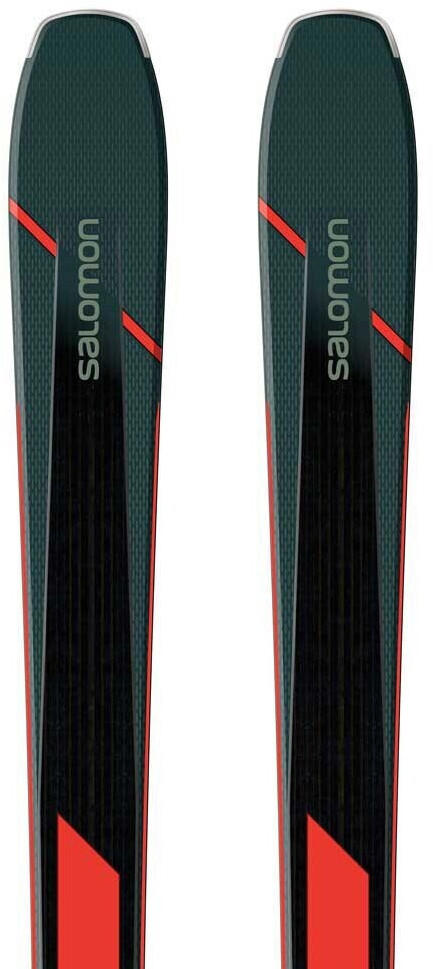

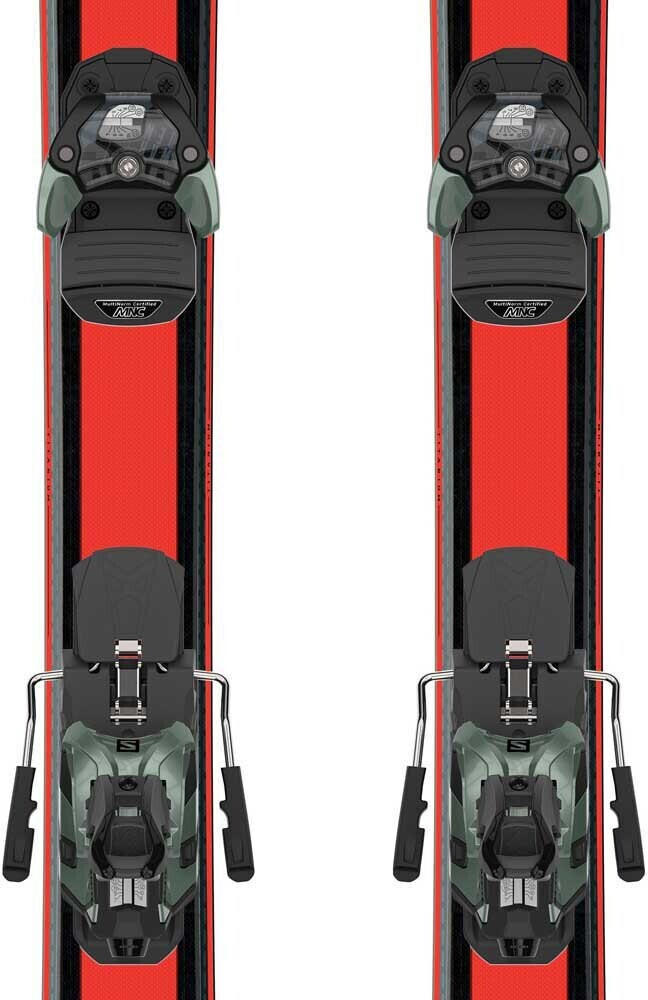
Length
The length of the skis will significantly affect your overall skiing experience. To determine the appropriate length, it is essential to consider your own height, weight, ski ability level, and the type of skiing you intend to do.
For beginners and intermediate skiers, longer skis might be challenging to maneuver and control, so it is recommended to opt for shorter skis. An excellent example of a ski suitable for beginners and intermediates is the Head Kore 93. With lengths ranging from 153cm to 189cm, the Head Kore 93 offers a lightweight construction and responsive feel, enabling skiers to quickly progress and enhance their skills on the slopes.
On the other hand, more advanced skiers who prefer speed and stability may opt for longer skis. The Volkl Mantra is a popular ski among advanced skiers, available in lengths up to 191cm. With a blend of camber and rocker profiles, the Volkl Mantra provides excellent edge grip, stability at high speeds, and versatility across varied terrain and conditions.

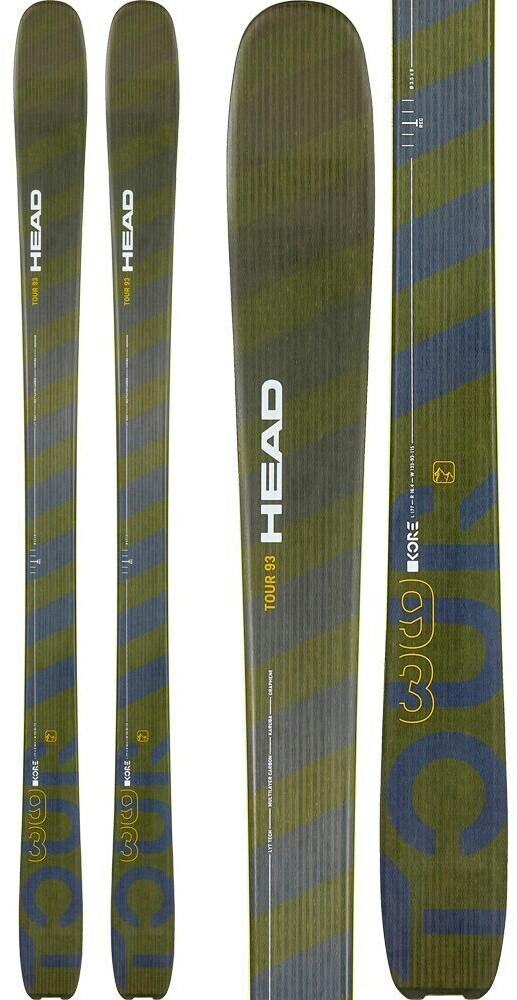

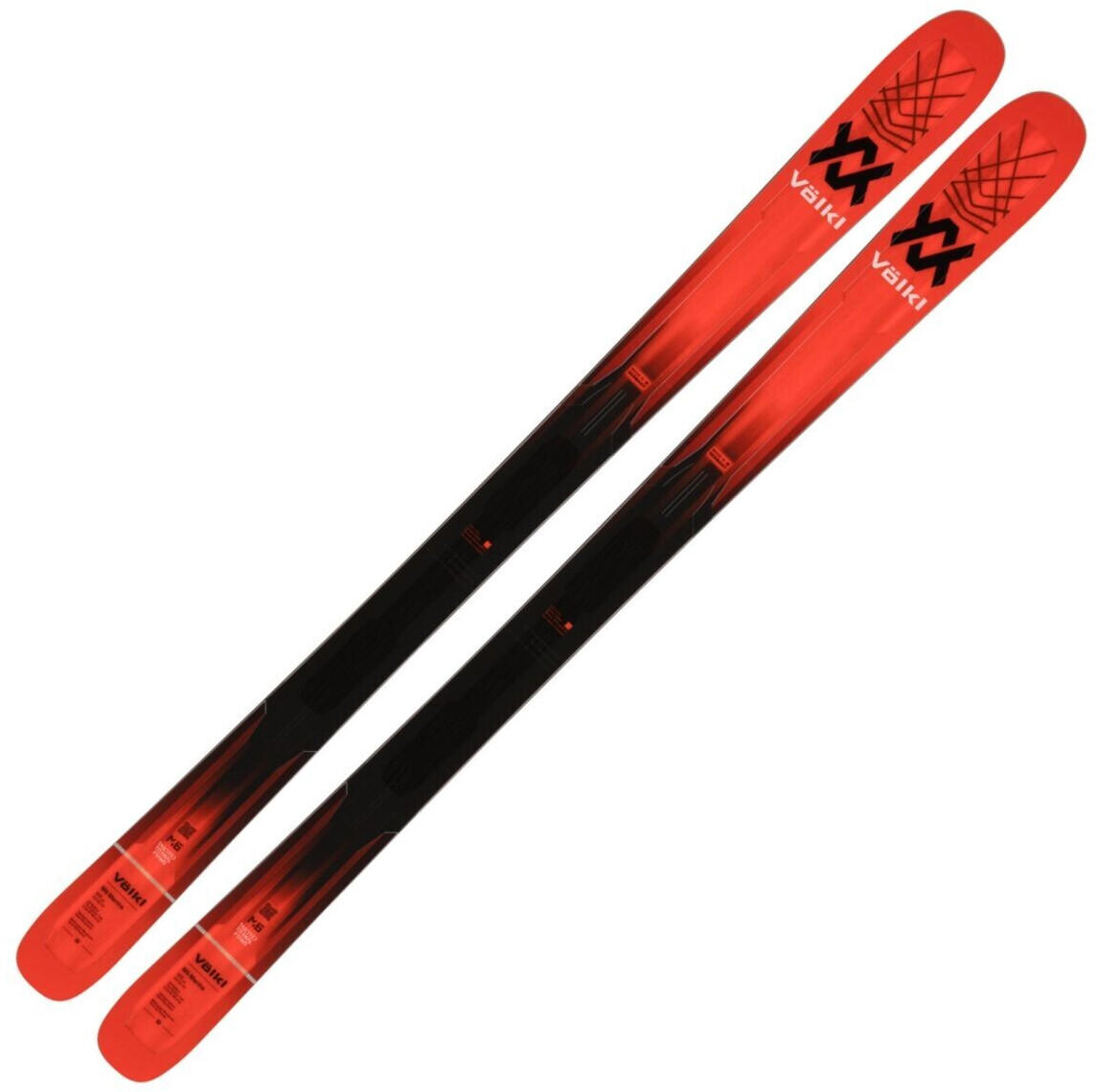
In summary, by considering your height, weight, ski ability level, and skiing preferences, you can make an informed decision on the appropriate length of skis. The Head Kore 93 is ideal for beginners and intermediates looking for maneuverability, while the Volkl Mantra suits more advanced skiers in search of stability and speed.




Width
Width refers to the width of the ski at its tip, waist, and tail. Narrower skis tend to be more agile and suitable for carving turns on groomed snow, while wider skis are more versatile and perform well in deeper snow. For example, the Atomic Vantage 86 C skis have a width of 86mm underfoot, making them ideal for skiers who enjoy a mix of groomed runs and off-piste adventures. On the other hand, the Rossignol Super 7 HD skis boast a broader width of 116mm underfoot, providing ample floatation in powder and immense stability on varied terrains.
In summary, when selecting skis, it's crucial to consider the width as it greatly affects the ski's performance in different snow conditions and terrains. Narrower skis like the Atomic Vantage 86 C excel on groomed slopes, while wider skis like the Rossignol Super 7 HD thrive in deeper snow and diverse terrain.
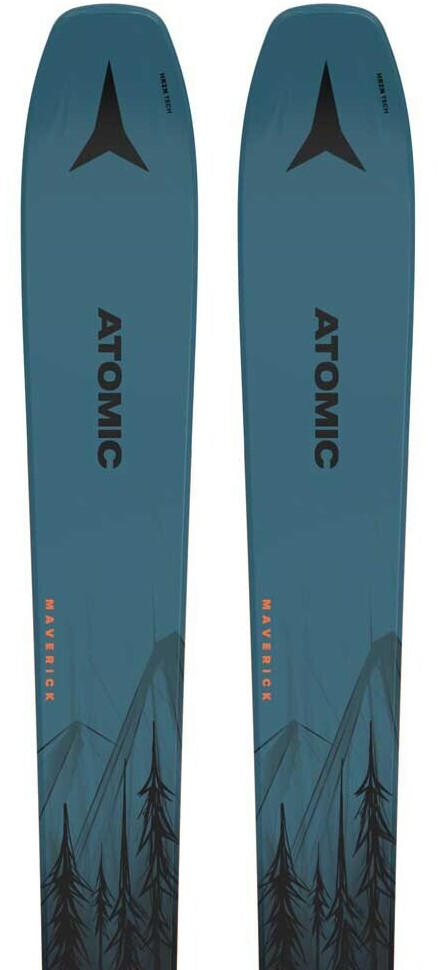

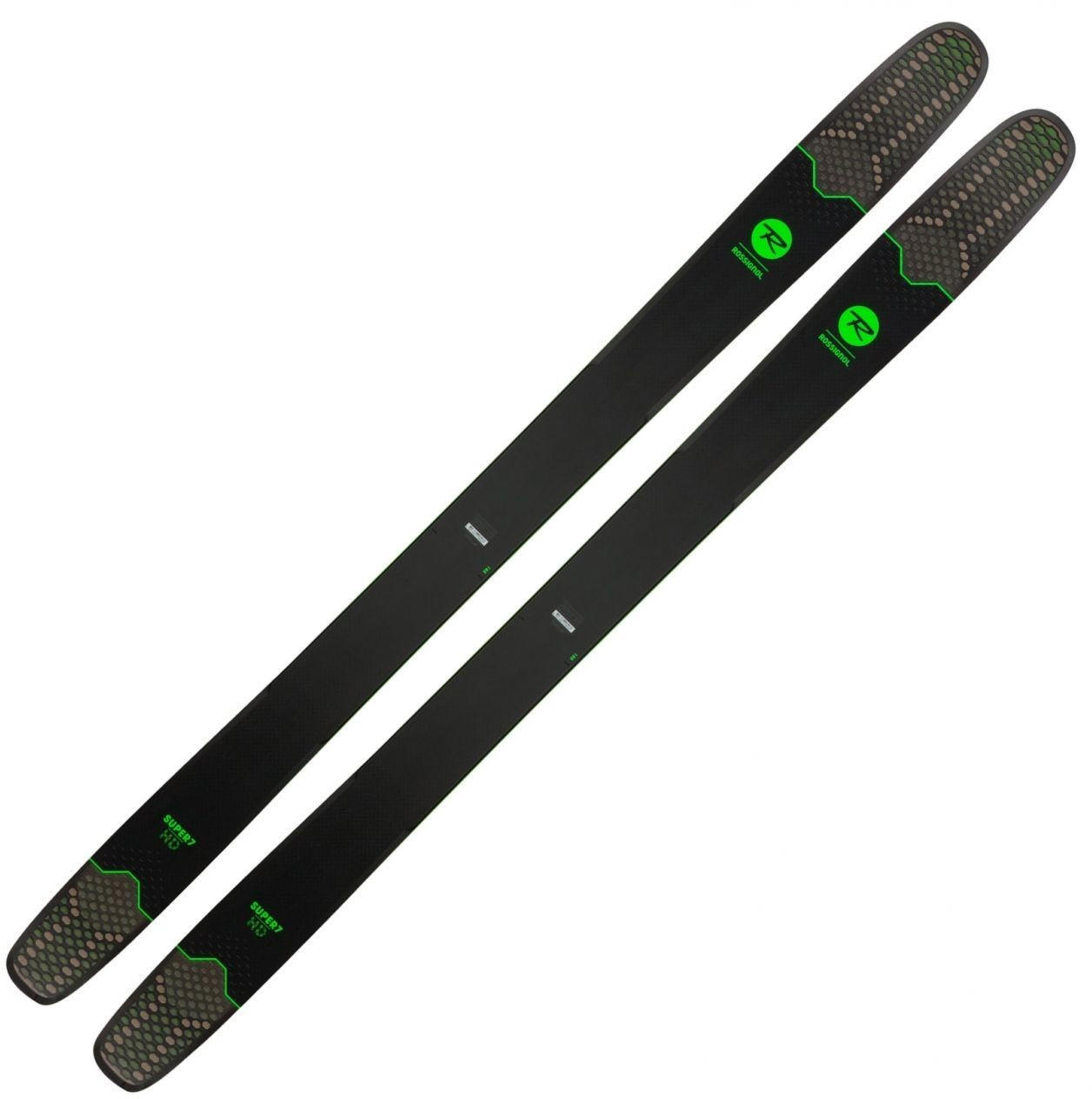
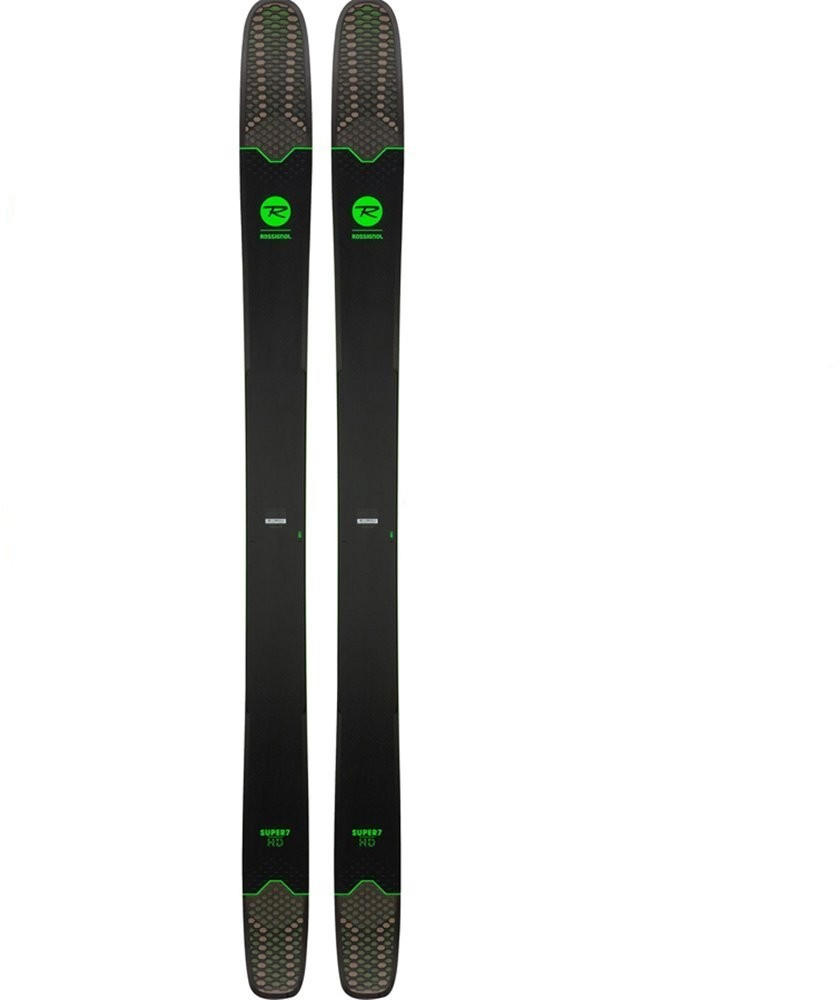
Flex
Flex refers to how stiff or soft a ski is and this can greatly impact your skiing performance. If you are an advanced or aggressive skier who enjoys fast and hard skiing, you might prefer skis with a stiffer flex. Skis such as the Volkl RTM 86 or the Nordica Enforcer 100 are excellent options for advanced skiers as they offer a stiffer flex that allows for quicker edge-to-edge transitions and powerful turns. On the other hand, if you are a beginner or intermediate skier, a ski with a softer flex would be more suitable. Something like the Rossignol Experience 88 TI or the Head Kore 93 would be great choices as they have a softer flex, making them more forgiving and easier to control.
In summary, when considering flex in skis, it is important to match the stiffness of the ski to your skiing style and ability level. Advanced skiers would benefit from stiffer flex skis like the Volkl RTM 86 or the Nordica Enforcer 100, while beginner and intermediate skiers would find softer flex skis such as the Rossignol Experience 88 TI or the Head Kore 93 more suitable for their needs.

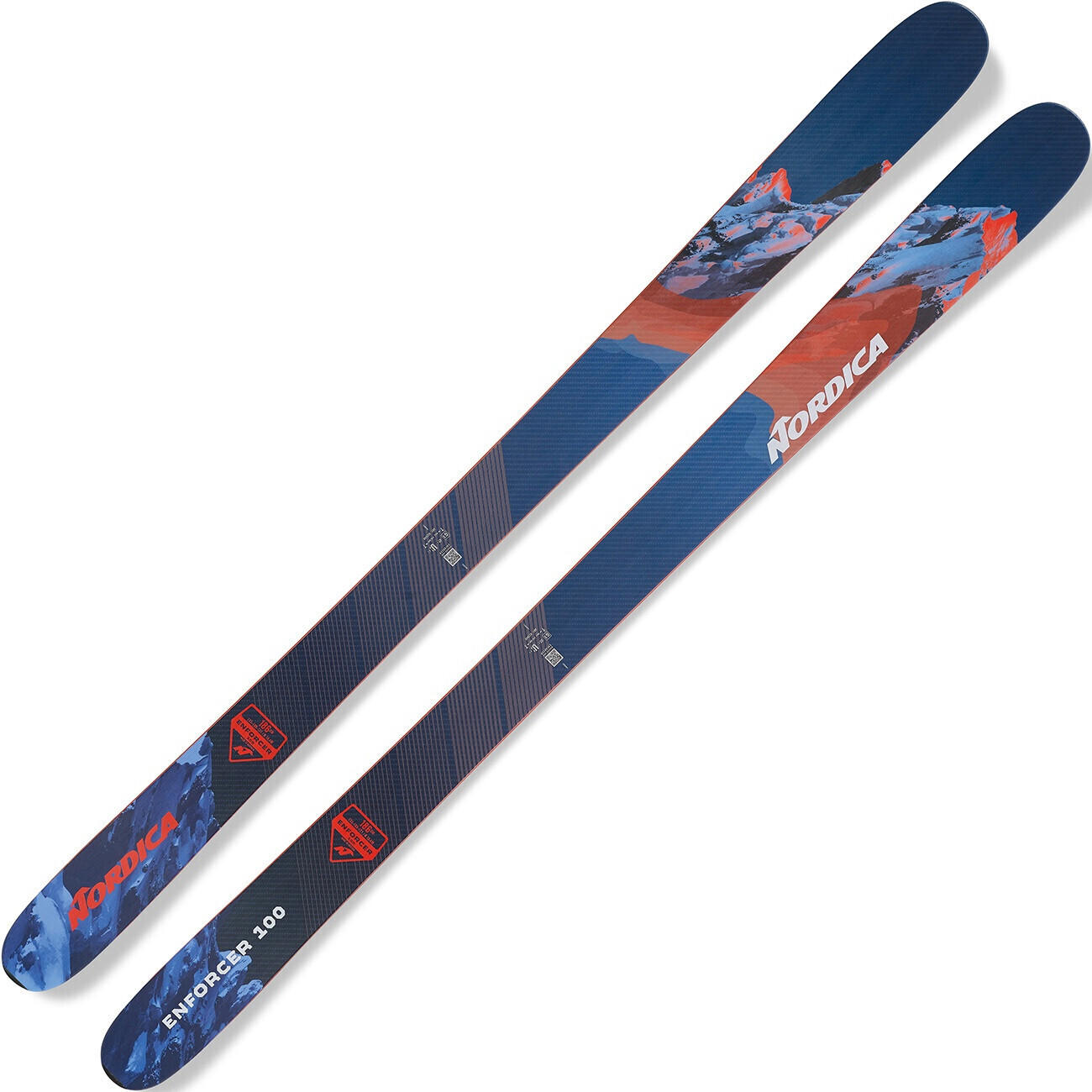


Camber
Camber refers to the slight arc in the ski when it is placed on a flat surface. Typically, skis with camber provide better grip, stability, and precise turning ability on groomed trails. However, there are different types of camber to choose from.
One popular choice are skis with traditional camber, such as the Volkl RTM 84 or the Salomon XDR 80 TI. These skis have a traditional arch shape, with the contact points closer to the ski's center. They provide excellent edge hold and responsiveness, making them ideal for aggressive skiers who prefer high-speed and carving.
Another option to consider are skis with rocker or early-rise camber like the Rossignol Experience 84 AI or the Atomic Bent Chetler 100. These skis have a lifted tip and/or tail, with the contact points located closer to the center of the ski. They offer improved maneuverability, easier turn initiation, and enhanced floatation in soft snow conditions.

The choice of camber depends on your skiing style, the terrain you'll be skiing, and the conditions you anticipate encountering.
Rocker
The rocker refers to the curvature of the ski and determines its performance in different conditions. There are mainly three types of rocker profiles - full rocker, rocker/camber/rocker, and camber/rocker.
For those who enjoy skiing in deep powder, a ski with a full rocker profile is recommended. These skis have a pronounced upward curve from tip to tail, allowing for great maneuverability and floatation. An excellent example of a ski with a full rocker profile is the Volkl 100Eight. With a fully rockered design and a wide waist, this ski effortlessly floats through fresh powder while offering exceptional agility.
Another popular rocker profile is the rocker/camber/rocker mix. These skis have a slight camber arch underfoot, which aids in carving and stability, while the rocker in the tip and tail enhances floatation and versatility. The Rossignol Experience 84 HD is an outstanding example of a ski with a rocker/camber/rocker profile. It combines its camber underfoot with rockered tips and tails for a balanced blend of performance on groomed runs and in variable snow conditions.
Lastly, there are skis with a camber/rocker profile, which feature a slight arch underfoot combined with rockered tips. This profile offers excellent edge grip and stability on hardpacked or groomed slopes while remaining versatile in softer snow. An exemplary ski in this category is the Blizzard Bonafide. With its camber underfoot and rockered tips, it boasts impressive carving abilities while still allowing for easy turn initiation and floatation in variable conditions.
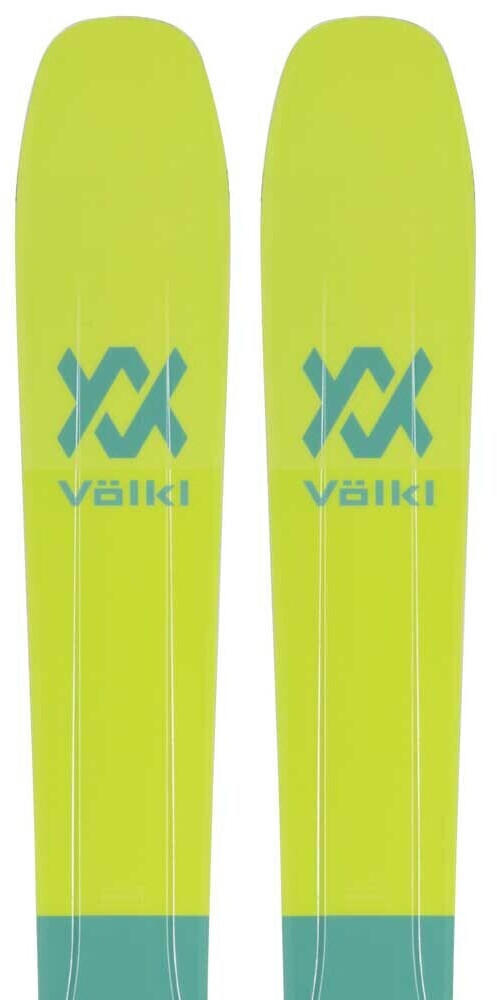

By considering the rocker profile, you can narrow down your options and make an informed choice based on your preferred skiing conditions.
Sidecut
Sidecut refers to the shape or curve of the skis from the tip to the tail. Skis with a deeper sidecut have a smaller radius which enables quick, sharp turns, making them ideal for slalom or giant slalom skiing. On the other hand, skis with a shallower sidecut have a larger radius making them more stable at higher speeds, perfect for carving wide turns or cruising on groomed slopes.
For those looking for skis with a deep sidecut and smaller radius, the Atomic Redster S7 offers excellent maneuverability with a sidecut of 120/98/111 and a turn radius of 12.3 meters. These skis are designed for aggressive skiers who want to conquer the slopes with speed and precision. On the contrary, for skiers seeking wider and more stable skis, the Rossignol Experience 88 Ti is a great option with a sidecut of 135/88/124 and a turn radius of 16 meters. These skis provide stability and versatility on various terrains, allowing skiers to confidently explore different slopes.

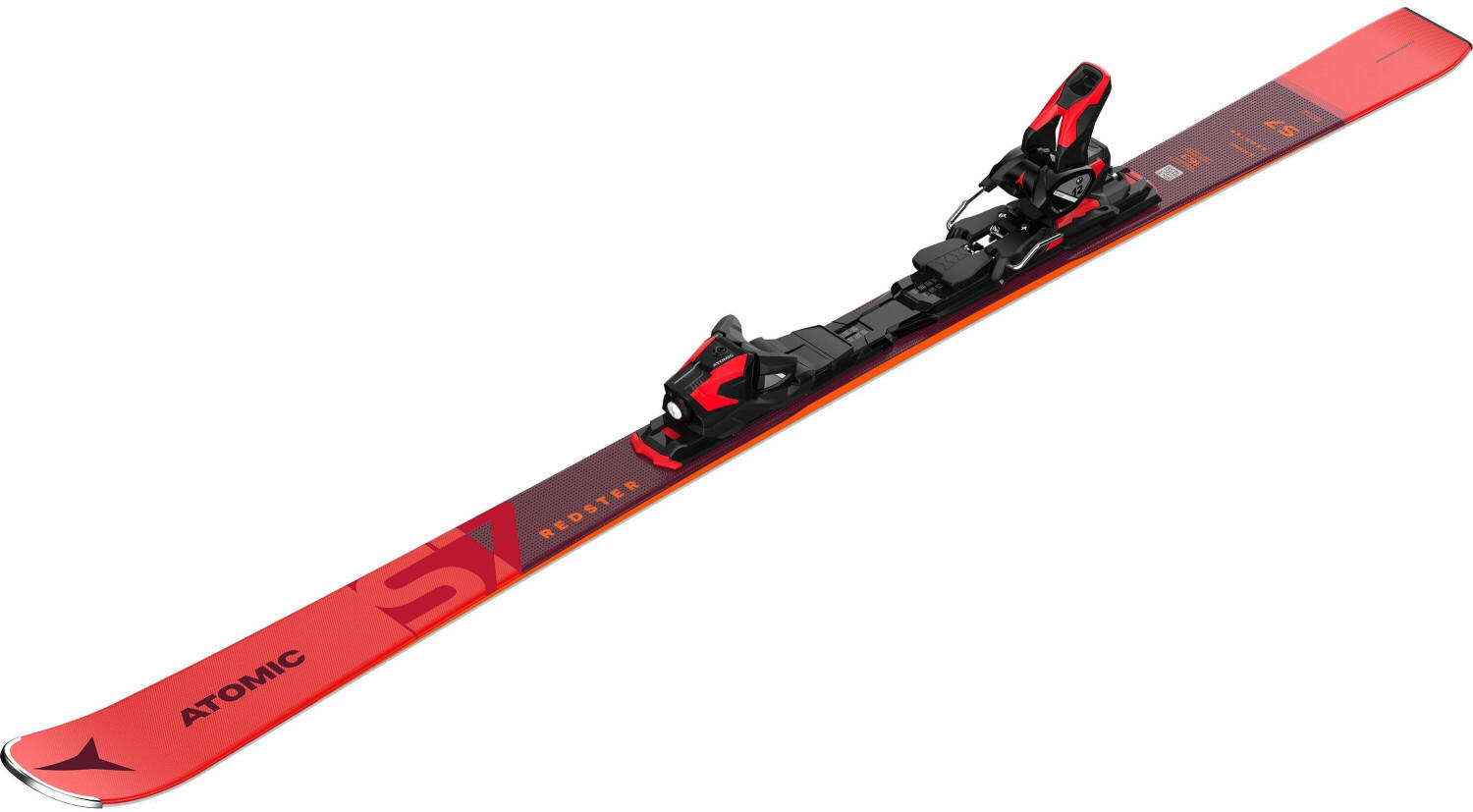

Stiffness
The stiffness of the ski has a significant impact on its performance and suitability for different skiing styles and terrains. Skis with a higher stiffness rating tend to be more stable and better suited for aggressive skiers, while skis with a lower stiffness rating are generally more forgiving and easier to control for beginners or intermediate skiers.
For those looking for high-stiffness skis, one example is the Volkl Mantra. Known for its exceptional edge grip and stability at high speeds, the Volkl Mantra offers a stiff flex that makes it ideal for advanced skiers looking to tackle challenging terrain. Another option for advanced skiers is the Atomic Redster S9. With a medium-stiffness flex, this ski combines responsiveness and control, making it suitable for groomed runs and slalom-type skiing.




For intermediate skiers or those looking for more forgiving skis, the K2 Pinnacle 95 can be a great choice. With a moderate stiffness rating, this ski offers a balance between responsiveness and ease of control, making it versatile for various terrain conditions. Another option for intermediate skiers is the Rossignol Experience 88. It features a slightly softer flex than advanced skis, enabling easier turn initiation and maneuverability while still providing stability and carving capabilities. Overall, identifying the stiffness of the skis that best suits your skiing level and style is crucial for an optimal skiing experience.
Weight
The weight of skis can greatly affect performance and maneuverability on the slopes. Lightweight skis are ideal for beginners or those who prefer a more forgiving and relaxed ski experience. The K2 Talkback 96 is a great lightweight ski option, weighing in at just 1335 grams per ski. This ski is designed for backcountry adventures and offers a nice balance between weight and performance.
For those seeking a more aggressive and responsive ski, a heavier option might be preferred. Advanced skiers who enjoy high-speed turns and off-piste skiing may consider the Black Crows Camox Freebird, which weighs 1750 grams per ski. This ski is specifically designed for freeride and powder skiing, offering stability and excellent floatation in various snow conditions.

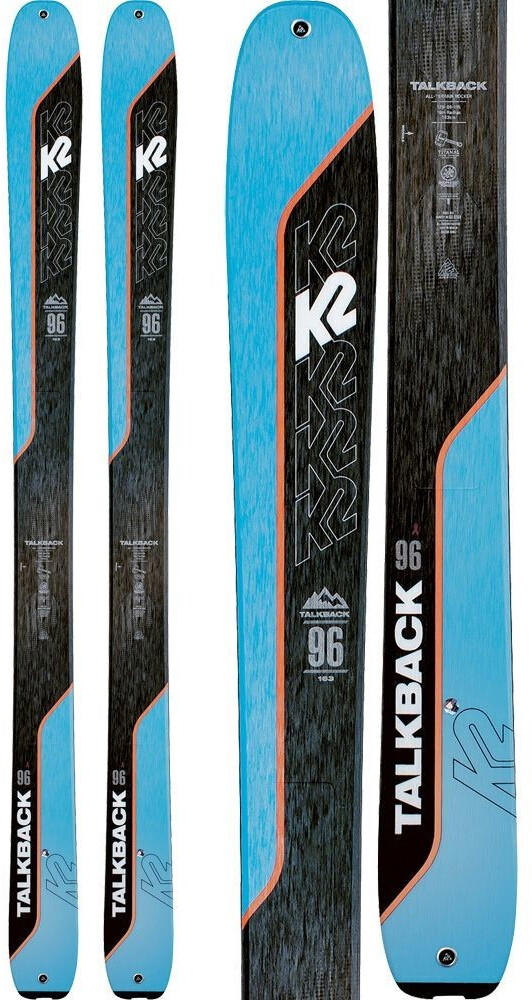

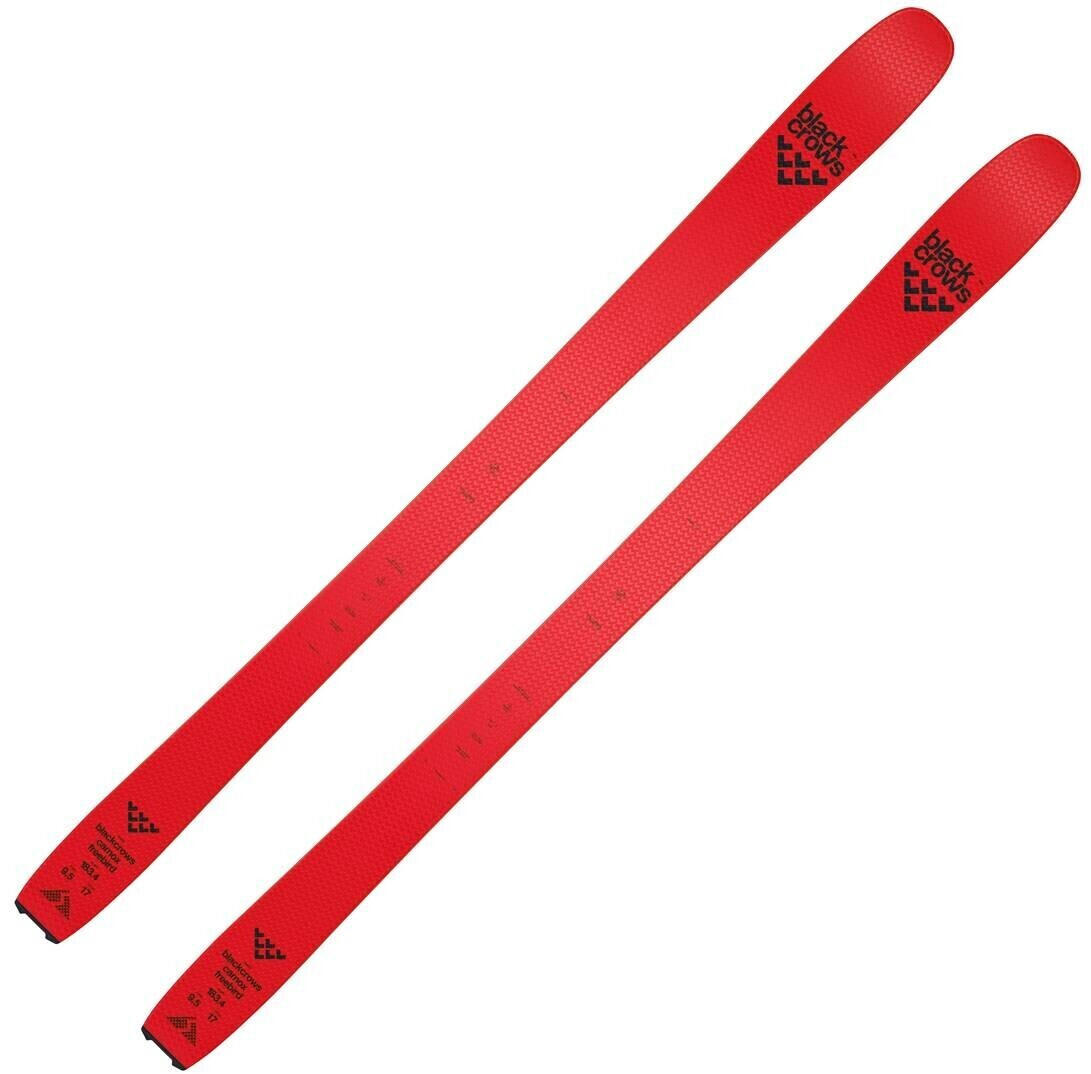
In the market, skis can generally be grouped into three segments based on weight: lightweight, all-mountain, and freeride. Some other lightweight ski options on the market include the Dynafit Seven Summits 2.0, weighing around 1250 grams per ski, and the Volkl V-Werks BMT 94, weighing approximately 1275 grams per ski. In the all-mountain segment, popular choices include the Salomon QST 99, weighing around 1810 grams per ski, and the Rossignol Experience 88, weighing approximately 1770 grams per ski. In the freeride segment, the Nordica Enforcer Pro is a heavier option, weighing in at around 2010 grams per ski. Keep in mind that weight alone should not be the sole criterion for choosing the right skis and it is crucial to consider other factors such as skill level, ski length, and skiing style.


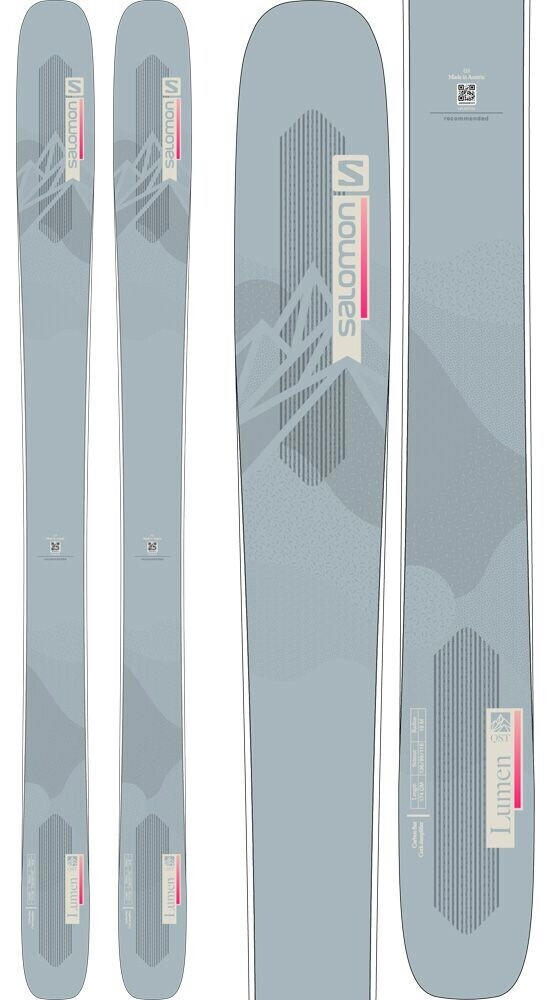

Material
The material affects the skis' weight, performance, durability, and responsiveness on the slopes. One popular material used for skis is carbon fiber, which offers excellent strength-to-weight ratio and responsiveness. For example, the Atomic Bent Chetler 100 skis are made with a carbon backbone, allowing for increased stability and responsiveness while maintaining a lightweight construction. Another commonly used material is wood core, which provides a dampening effect, allowing skiers to have a smooth and stable ride. The Volkl Mantra 102 skis feature a multi-layer wood core, providing the perfect blend of responsiveness, stability, and control. It's worth noting that some skis combine various materials to optimize different characteristics, such as the Rossignol Blackops Sender skis, which comprise a mix of paulownia wood and carbon, offering a lightweight construction and impressive vibration dampening properties. Each material has its own unique performance properties, ensuring there's a ski for every skier's preference and style.
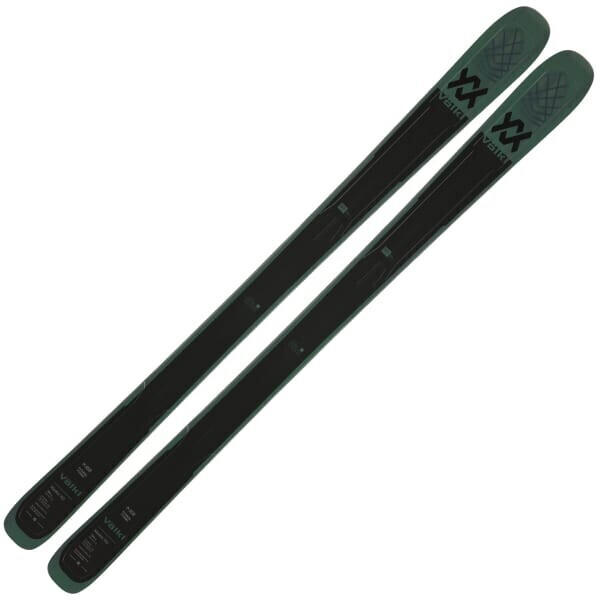
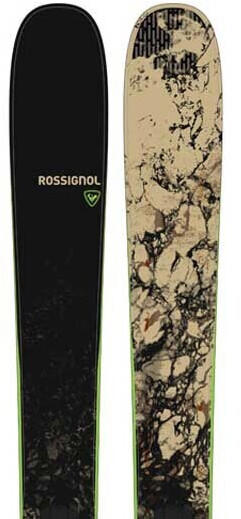
Construction
Skis are typically constructed using different materials and construction methods, which directly impact their performance on the slopes. For example, the Atomic Backland 107 uses an innovative carbon sandwich construction that makes it lightweight and ensures excellent stability and edge grip. The Volkl Mantra M5 features a multi-layer wood core combined with metal laminates that provide a stable and powerful base for charging down the mountain. On the other hand, the Rossignol Experience 88 Ti uses a combination of wood and basalt to offer a lighter weight ski with great responsiveness and energy transmission. Skis can also be categorized into different segments based on construction, such as all-mountain, freeride, and freestyle skis. Some popular all-mountain options include the versatile Blizzard Bonafide, the powerful Nordica Enforcer 100, and the playful Rossignol Soul 7 HD.
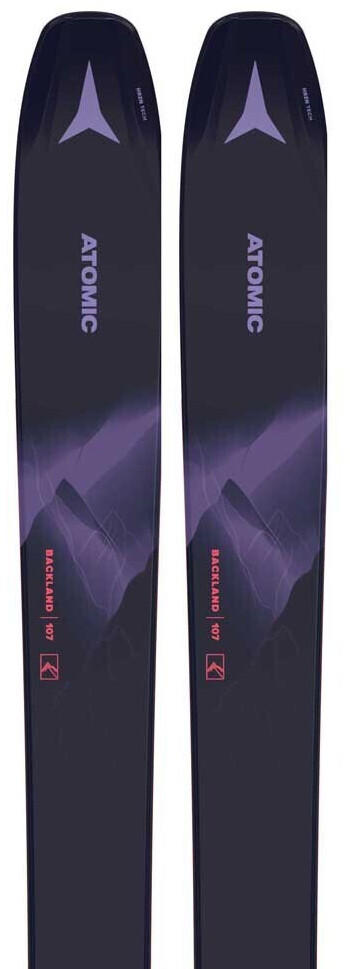



Bindings compatibility
Bindings are the interface between your boots and skis, ensuring control, safety, and optimum performance. There are different types of bindings available, so it is vital to ensure that they are compatible with your skis. One popular type is the alpine bindings, such as the Salomon S/LAB SHIFT MNC and the Marker Griffon 13. These bindings are designed for alpine skiing and are compatible with skis that have flat bases and integrated ski binding plates. Another type is the touring bindings, such as the Dynafit Radical ST 2.0 and the Marker Duke EPF 16. These bindings are suitable for backcountry skiing and have a binding interface that allows for efficient uphill climbs and reliable downhill performance. It is important to match the specific bindings with the skis you choose to ensure a perfect fit and experience on the slopes.
Skill level
Beginner skiers should look for skis that are forgiving and easy to turn. A great option for beginners is the Rossignol Experience 76 CI. This ski features a soft flex which provides stability and makes turning effortless. It also has a generous sidecut and rockered tip for better maneuverability and control. Intermediate skiers who are looking to progress their skills might consider the Volkl Deacon 74 Pro. This ski is designed for carving and offers exceptional grip and stability on groomed runs. It boasts a multi-layer wood core, a layer of Titanal for added strength, and a 3D.Ridge construction that optimizes performance and response. Expert skiers seeking high-performance skis can consider the Blizzard Bonafide. This ski is known for its versatility, with a 98mm waist width and a strong yet lightweight construction. It offers great float in deep snow and excellent stability at high speeds.
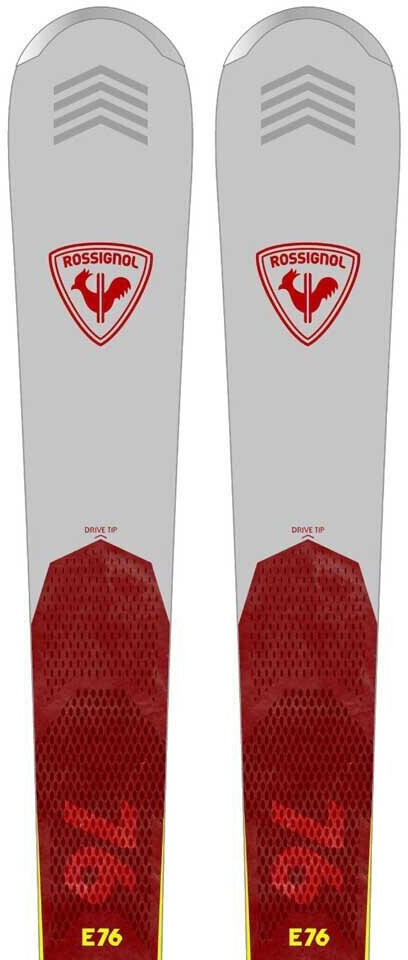
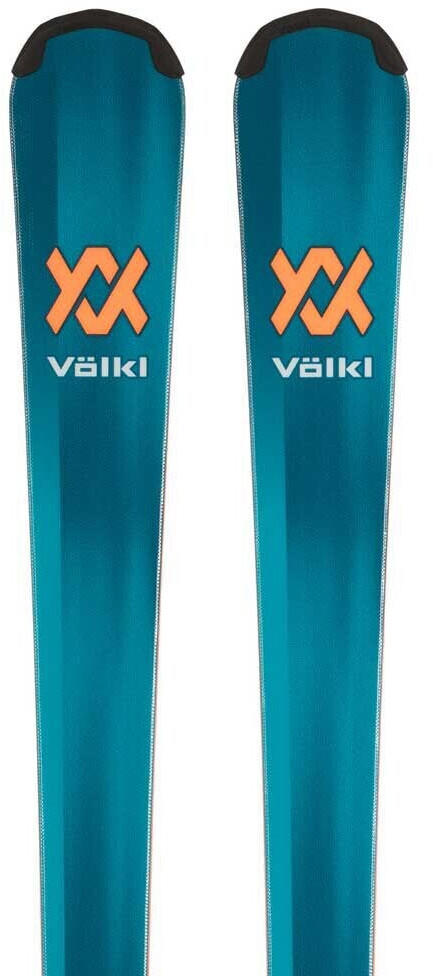

Terrain type
Terrain type greatly influences the performance and features you should look for in a ski. For the powder hounds out there, who love deep snow and off-piste adventures, a wide-waisted ski with excellent flotation is essential, such as the Volkl M5 Mantra. Its 96mm waist provides optimal float in powder while offering stability and control on groomed runs. On the other hand, if you enjoy carving turns on groomed slopes, a narrower ski with a slalom-like construction, such as the Atomic Redster X9, would be more suitable. With a narrower waist of 71mm and a race-inspired design, it offers excellent edge grip and responsiveness for carving precise and aggressive turns on harder snow. For those who like to explore a mix of terrains, an all-mountain ski like the Salomon QST 99 would be ideal. With a versatile 99mm waist width, it offers a great balance between stability and maneuverability, allowing you to tackle both groomed runs and variable off-piste conditions with confidence.


Speed
Speed skis typically have longer lengths and narrower waists, allowing for increased stability and efficient energy transfer. One exceptional product that fits this description is the Atomic Redster G9 ski. Designed for high-speed carving, these racing skis feature a titanium construction that provides superb power transmission, while the Full Sidewall and sandwich construction add stability and edge grip.
Another notable option for speed enthusiasts is the Rossignol Hero Elite ST Ti ski. These high-performance skis boast a responsive response due to their dynamic Powerdrive Piste technology, which enhances skiing precision and edge hold. Additionally, the inclusion of the race plate NS Flow ensures optimum flex for easier control and expert handling at high speeds.
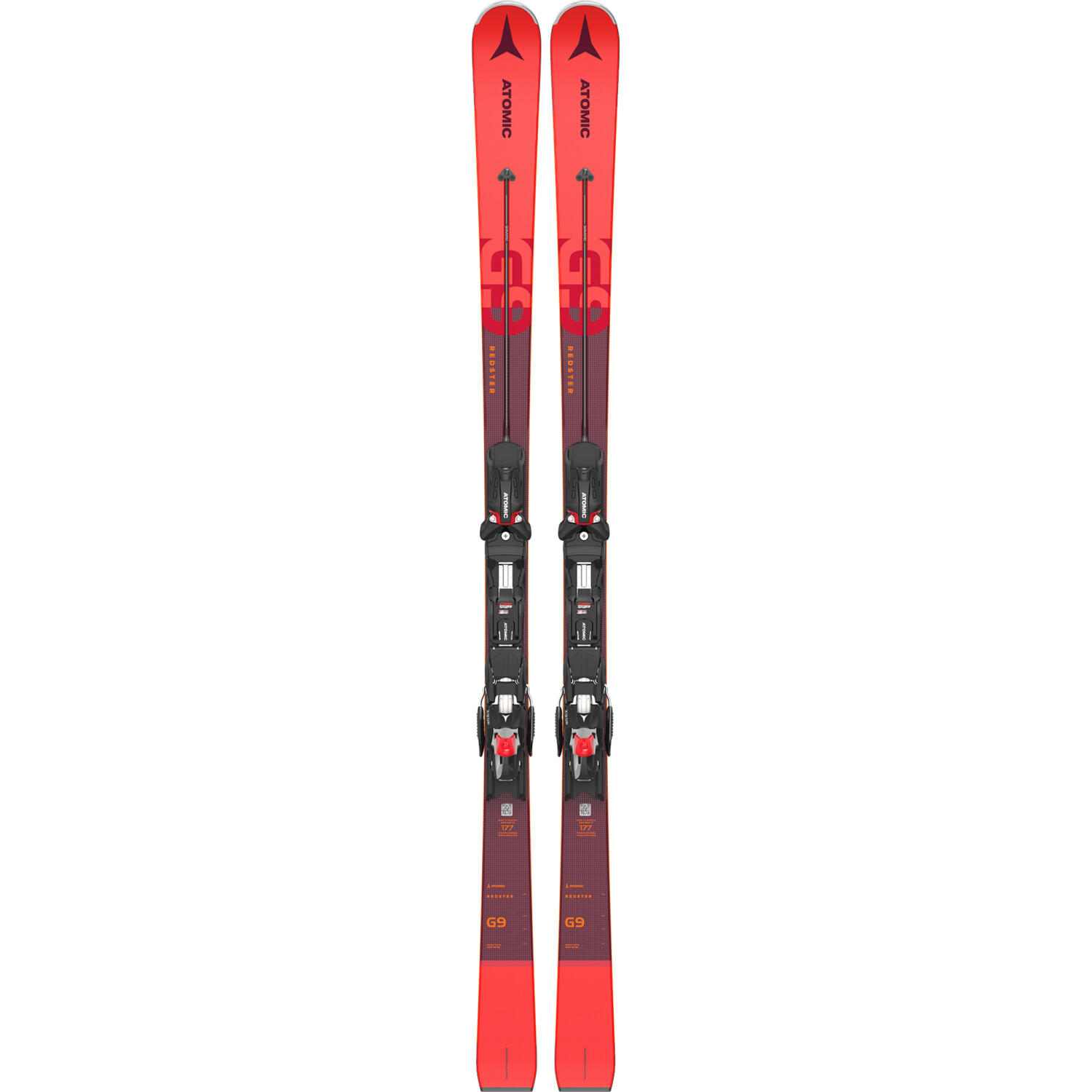
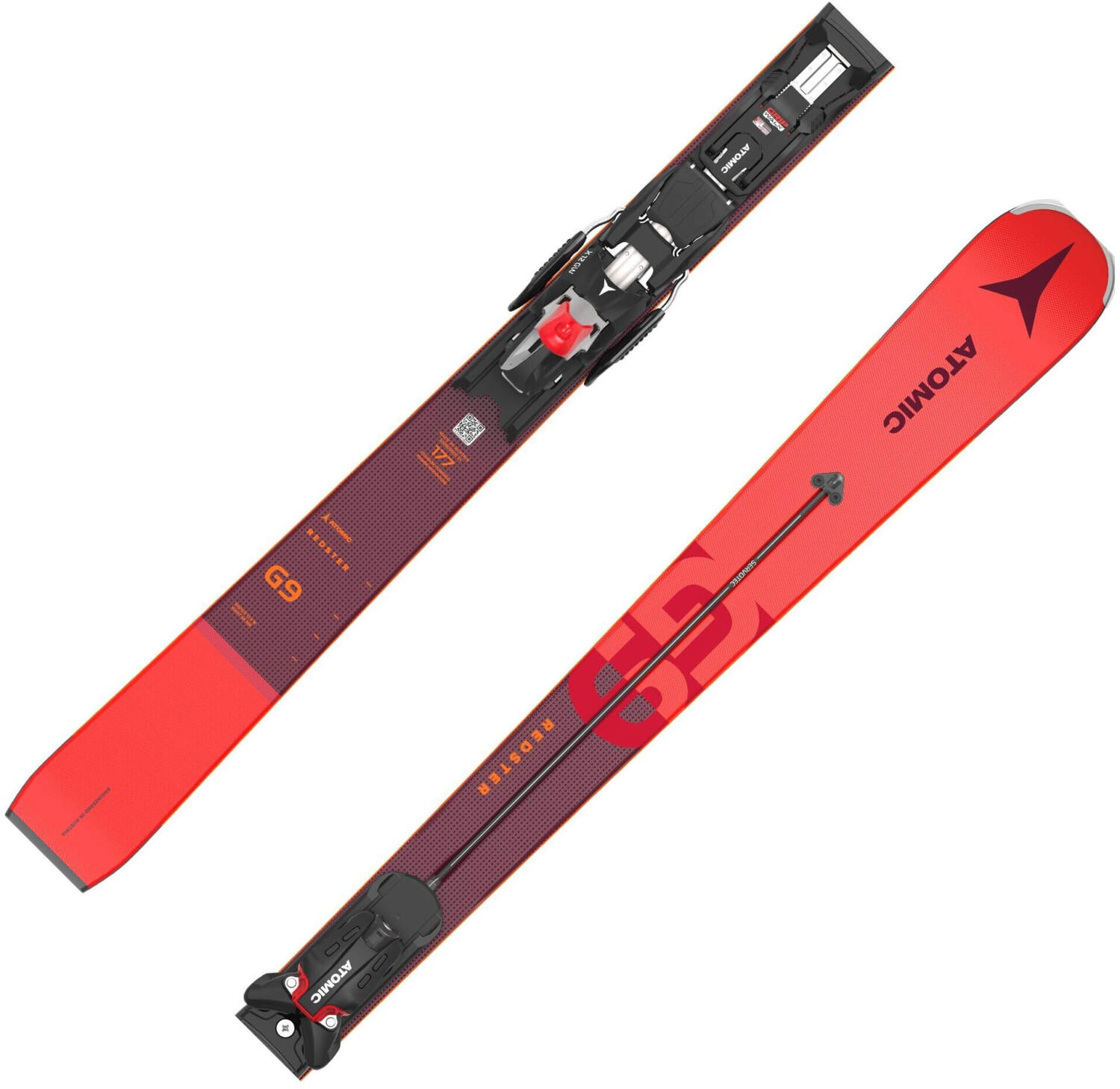

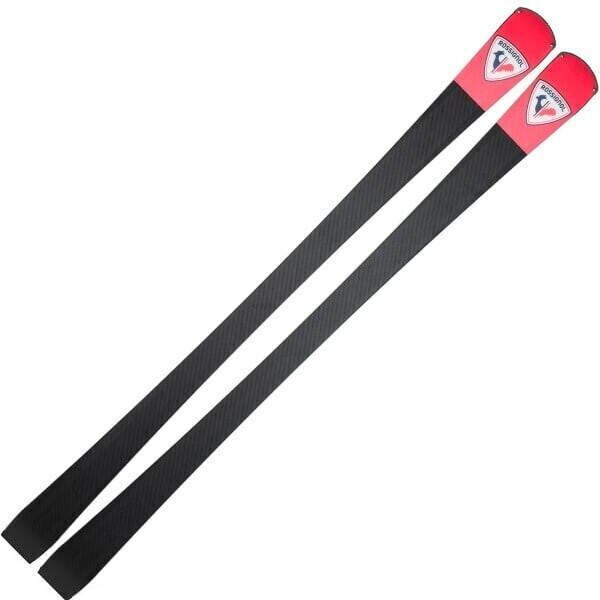
In the market, there are various segments of speed skis to consider based on specific preferences and abilities. For advanced skiers and racers looking for top-notch performance, one recommended segment is the race or high-performance category. Alongside the aforementioned Atomic Redster G9 and the Rossignol Hero Elite ST Ti, other notable options in this segment include the Head Worldcup Rebel i.Speed Pro and the Nordica Dobermann. These skis excel in stability, control, and acceleration, making them ideal for carving tight turns and pushing the boundaries of speed on the slopes.


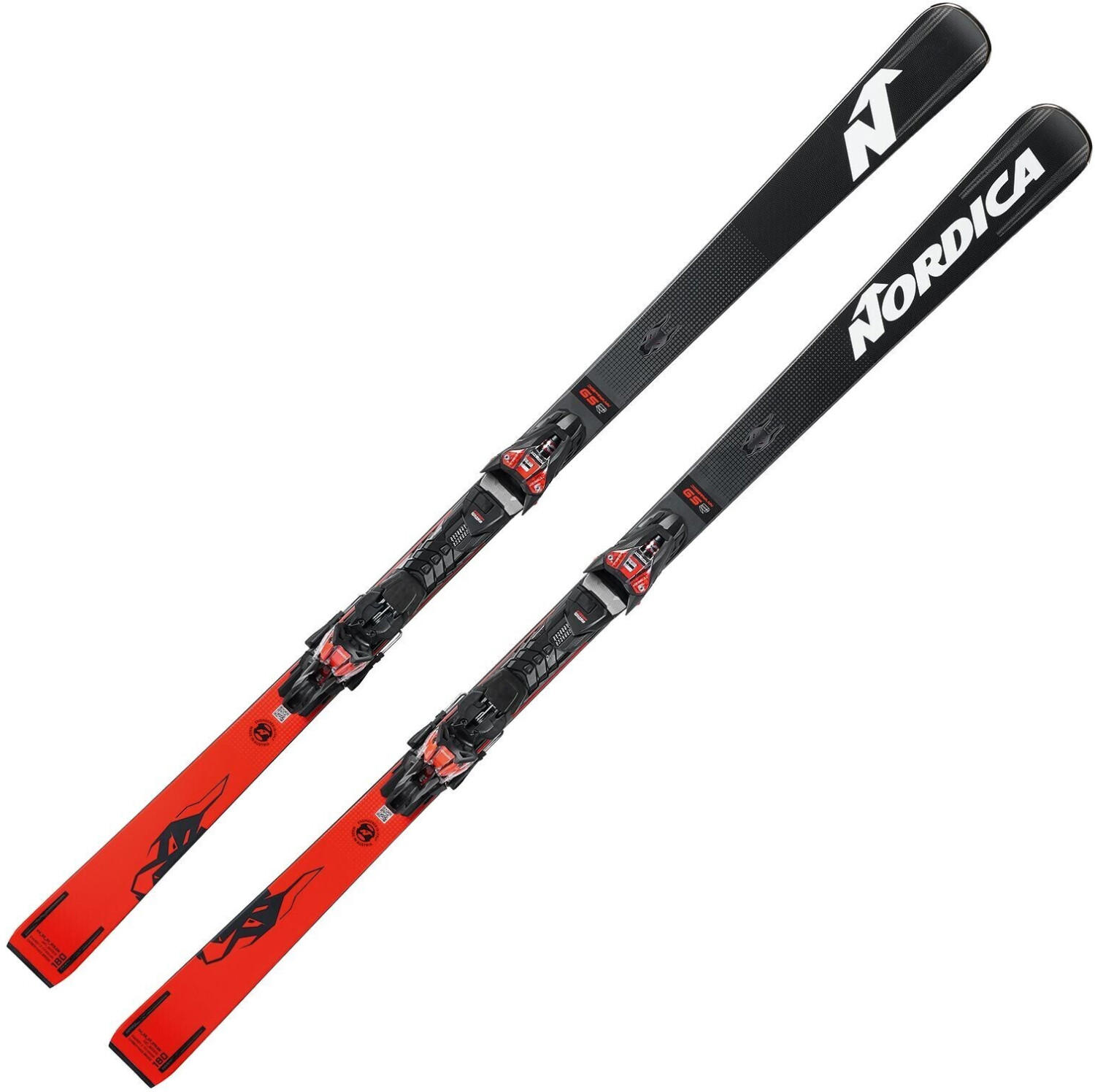
Turn radius
One important factor to consider when choosing the right skis is turn radius. Turn radius refers to the size of the arc a ski will make when turning at a certain speed. Skis with a shorter turn radius are more maneuverable and easier to turn quickly, making them ideal for short, quick turns on groomed slopes. On the other hand, skis with a longer turn radius are more stable and suitable for longer, drawn-out turns at higher speeds.
- For those looking for skis with a shorter turn radius, the Atomic Vantage X 77 C is a great choice. With a turn radius of 14.1m, this ski is highly responsive, perfect for quick turns on groomers.
- If you prefer skis with a longer turn radius for increased stability, the Rossignol Experience 84 AI is a top contender. With a turn radius of 15m, it offers a balance between maneuverability and stability, making it an excellent option for varying conditions.
- For a more specific focus on straight-line stability and high-speed turns, the Nordica Enforcer 94 stands out. With a longer turn radius of 16.5m, it excels in carving hard turns at high speeds.

Maneuverability
This refers to how easily and responsively the skis can be turned for different types of skiing, such as carving, moguls, or glade skiing. The width and design of the skis can greatly impact their maneuverability.
For those looking for excellent maneuverability, Rossignol Experience 88 TI Skisare a top choice. With a 88mm waist width, these skis offer a balance between stability and agility. Their progressive sidecut allows for easy turn initiation and quick, precise turns. Additionally, the ski's lightweight construction and carbon alloy matrix provide optimal energy transfer and control.
Another highly maneuverable option is the Volkl Code L Skis. These skis feature a versatile Sidecut Dual Radius design, allowing for both short and long radius turns with ease. With a 74mm waist width, they offer nimble maneuvering and quick edge-to-edge transitions. The inclusion of Volkl's UVO technology helps absorb vibrations for a smooth, stable ride.
For those who prefer powder skiing, Atomic Bent Chetler 100 Skisare an excellent choice. These skis have a wider waist width of 100mm, providing increased floatation and maneuverability in deep snow. The ski's signature HRZN Tech tip and tail design enhances maneuverability by allowing for easy pivoting and surf-like turns.

In summary, maneuverability is a crucial consideration when choosing the right skis. The mentioned products - Rossignol Experience 88 TI Skis, Volkl Code L Skis, and Atomic Bent Chetler 100 Skis- are great options that excel in maneuverability, offering different characteristics to suit various skiing styles.

Stability
Stability refers to the skis' ability to maintain control and a steady ride even at high speeds or on varied terrain. One example of a ski known for its stability is the Volkl Mantra V-Werks. With a full carbon construction and a lightweight design, it offers power and stability without added weight. Another option is the Nordica Enforcer 100, which incorporates a wood core and two sheets of metal to provide stability and dampening without sacrificing control. For those specifically looking for extra stability off-piste, the Fischer Ranger 102 FR stands out with its hybrid wood core and carbon frame, offering stability and versatility in challenging conditions. Other notable skis known for their stability include the Rossignol Experience 88 TI and the Atomic Vantage 90 Ti. Overall, these examples highlight some of the market's top choices for stability on the slopes.
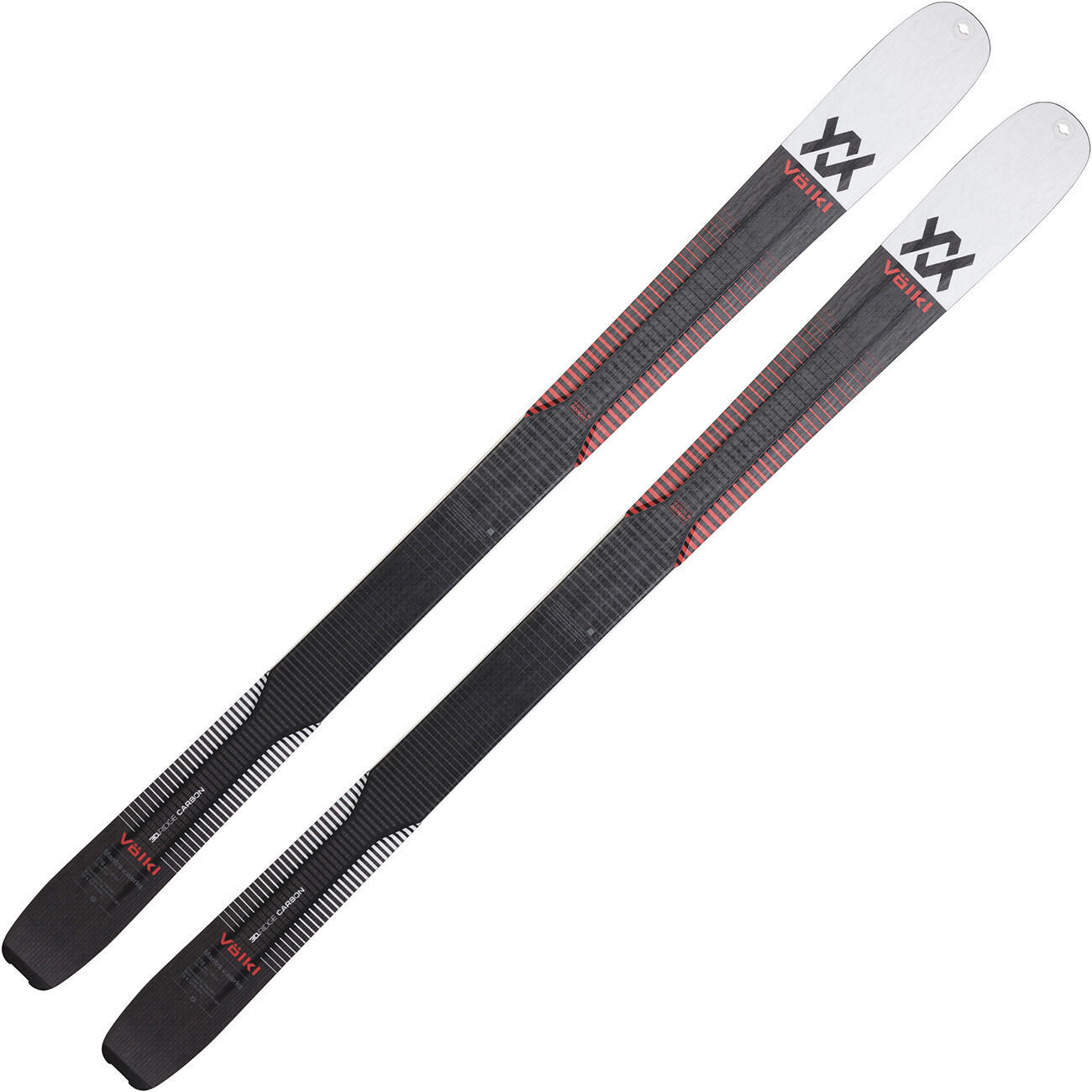




Edge hold
This refers to the skis' ability to grip the snow and maintain control while carving turns on groomed slopes or icy conditions. A ski with good edge hold will have features such as a camber profile, a narrower waist width, and a stiffer flex.
In the freeride segment, Volkl Mantra is a highly recommended ski with excellent edge hold. It features a full camber profile and a 96mm waist width, providing stability and precision while slicing through icy conditions. For the all-mountain category, Atomic Vantage 90 Ti is a standout option. It incorporates Atomic's Servotec technology, which enhances edge hold by adding stability and dampness during high-speed carving. Lastly, for the carving enthusiasts, the Head Worldcup Rebels i.SL is a fantastic choice. With a narrow 67mm waist, a full camber design, and a race-inspired construction, this ski delivers exceptional edge hold even on the iciest of slopes.


Powder performance
Firstly, the width of the ski plays a crucial role in how it performs in deep snow. Skis with a wider waist width, such as the Volkl Mantra 102 or the Rossignol Soul 7 HD are designed to effortlessly float on powder, providing excellent maneuverability. The Voelkl Confession and the Atomic Backland Bent Chetler are ideal choices for skiers seeking a big mountain, powder-specific ski with a wide shovel tip for improved flotation. Secondly, the shovel design of the ski, often referred to as the rocker profile, can greatly impact powder performance. Skis with a pronounced rocker, such as the Black Crows Atris or the Head Kore 117 offer superior flotation in deep snow and enhanced ease of maneuverability.
In the market, powder-specific skis can be grouped into all-mountain powder skis, big mountain powder skis, and backcountry powder skis. All-mountain powder skis, like the previously mentioned Volkl Mantra 102, are versatile options for those who traverse different types of terrain but still prioritize powder. Big mountain powder skis, such as the K2 Pinnacle 118 or the Dynafit Beast 108 are designed for more aggressive skiers who seek bigger lines and require skis that can handle high speeds and challenging conditions. For skiers who enjoy venturing into the backcountry, backcountry powder skis like the Blizzard Zero G 105 or the G3 FINDr 102 deliver lightweight performance without compromising powder-proficiency during ascents and descents.

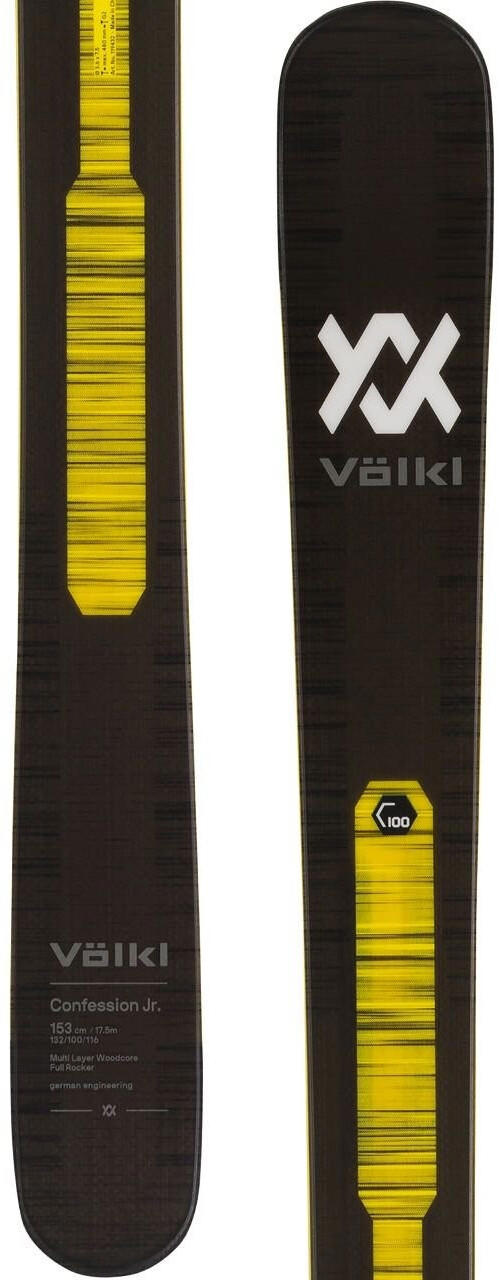

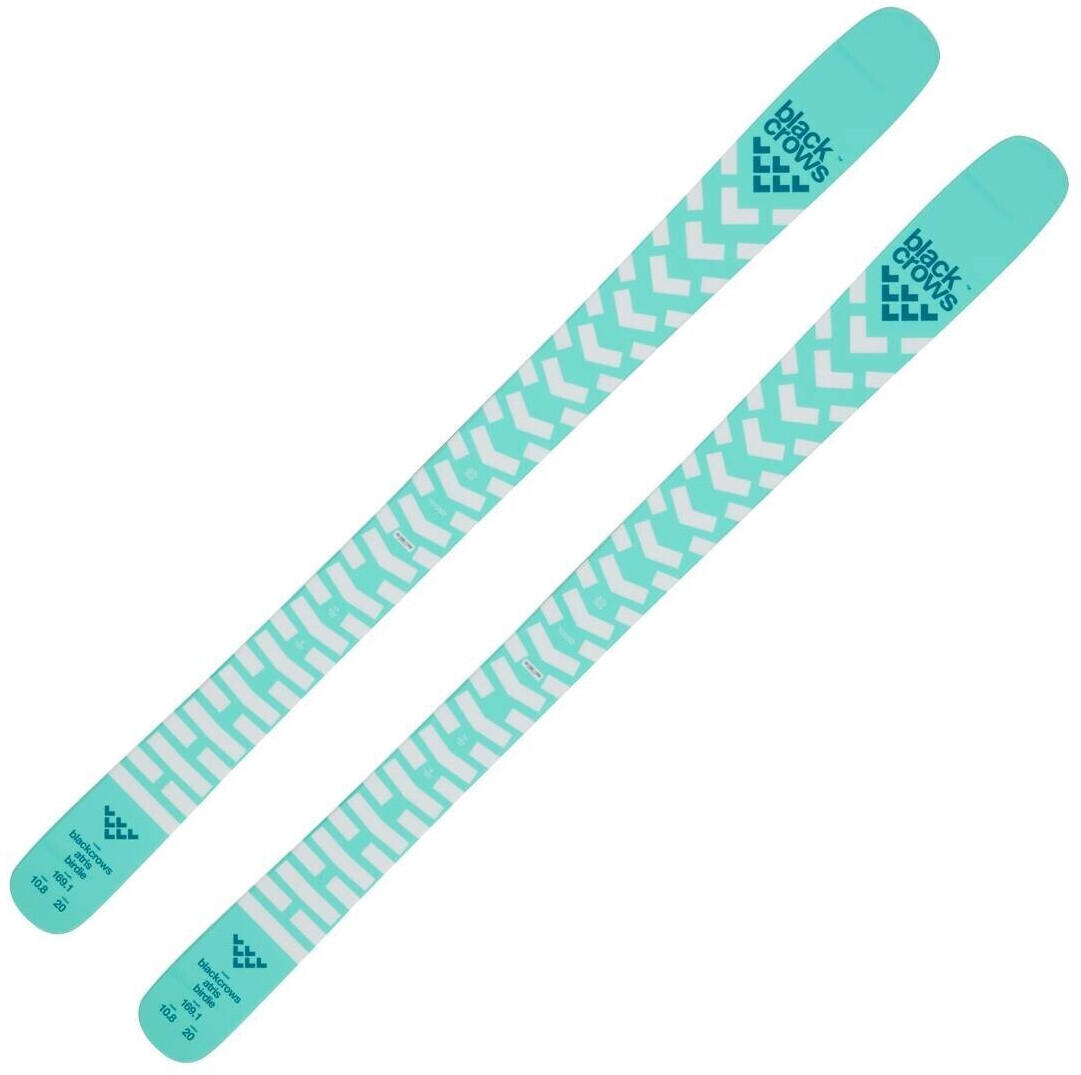

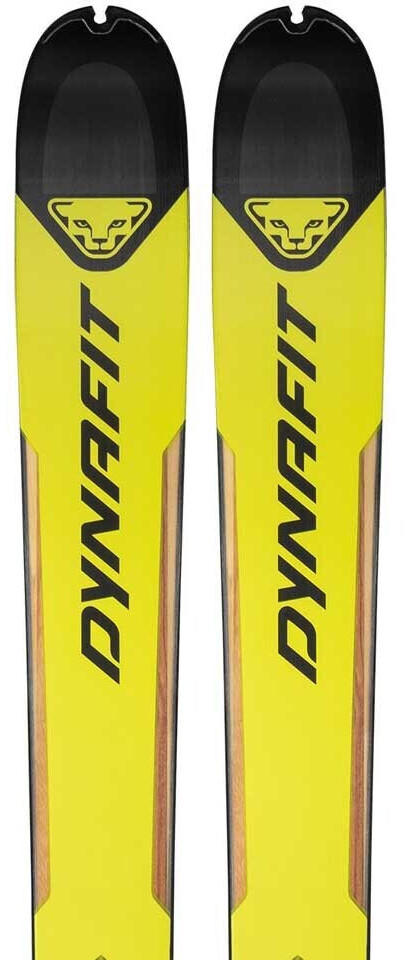

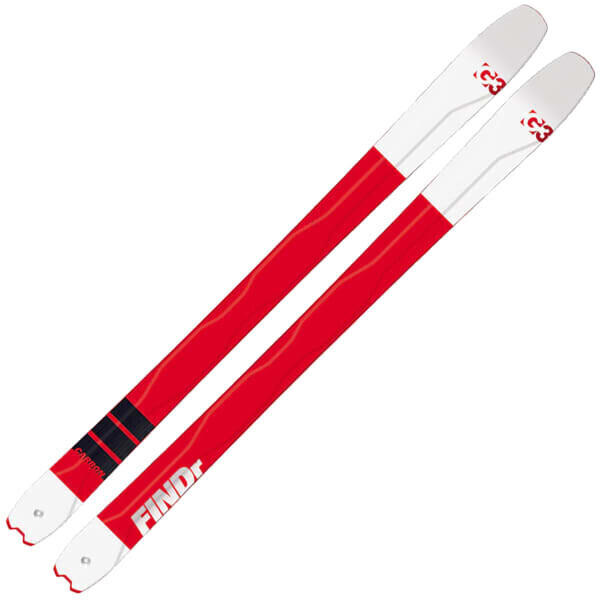
All-mountain performance
All-mountain skis are designed to perform well on a variety of terrains and snow conditions, making them an excellent choice for skiers looking for versatility. Some popular examples of all-mountain skis include the Atomic Vantage 97 C, Salomon QST 99, and Rossignol Experience 88 Ti. These skis are typically built with a waist width ranging from 85mm to 100mm, providing a perfect balance between groomed runs and off-piste adventures. With features like camber underfoot and rocker in the tip and tail, they offer stability, maneuverability, and enhanced floatation in softer snow. Whether you enjoy carving turns on groomed slopes or exploring ungroomed terrain, these all-mountain skis will provide you with the confidence and performance you need for a great skiing experience.

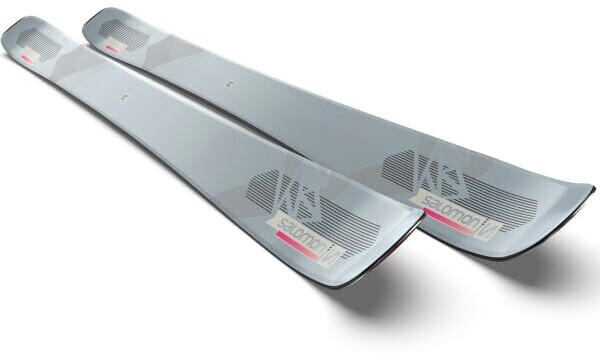
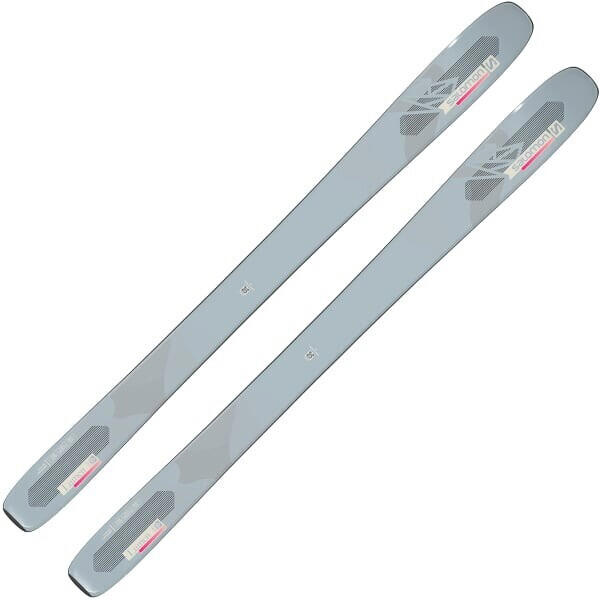
Mogul performance
One example of such skis is the Nordica Enforcer 93. With a waist width of 93mm, it strikes a balance between agility and stability. Its Energy 2 Titanium construction provides power and precision, while the All Mountain Rocker profile ensures effortless turn initiation. Another option to consider is the Blizzard Bonafide. This ski, with a wider waist width of 98mm, offers enhanced stability and float in deeper snow while retaining agility through the moguls. Its Flipcore Technology and Carbon Frame construction provide stability, dampness, and a lively feel.
In the market, skis for mogul performance can be divided into two segments based on width. The narrower segment, such as the Atomic Vantage 86 C, features skis with waist widths around 86mm. These skis prioritize quick, agile turns and are great for carving within moguls. On the other hand, the wider segment, including skis like the Volkl Kendo, offers waist widths around 90mm to 100mm. These skis add stability and allow for better floatation in varied snow conditions, making them versatile for moguls as well as off-piste adventures.



Park and pipe performance
When it comes to park and pipe performance, there are a few essential factors to consider. First and foremost, the skis should have a twin tip design, allowing for easy takeoff and landing in both directions. Additionally, the skis should have a shorter length than traditional skis, providing greater agility and maneuverability.
One example of skis specifically designed for park and pipe performance is the Armada ARV 86. These skis feature a lightweight construction combined with a wider waist width, providing optimal balance and control. Another option is the Line Honey Badger, which boasts a durable and versatile wood core. Its symmetric flex pattern and early rise tip and tail enhance maneuverability and spin initiation for park and pipe enthusiasts. For advanced skiers looking for a high-performance option, the Atomic Punx 7 features a wide and stable waist, along with a thicker tip and tail to withstand high-intensity landings. Overall, these skis are tailored to the demands of the park and pipe environment, allowing for seamless tricks and gravity-defying jumps.

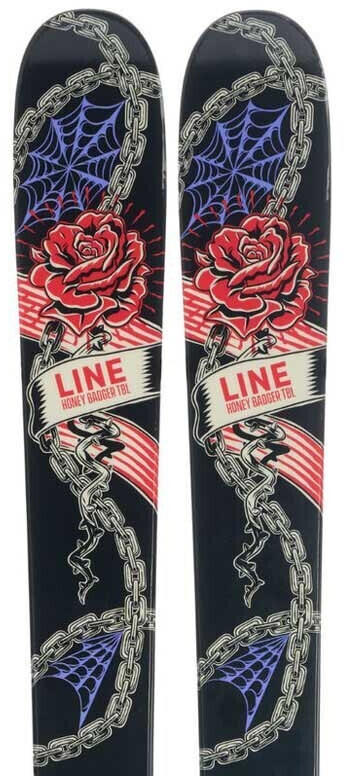
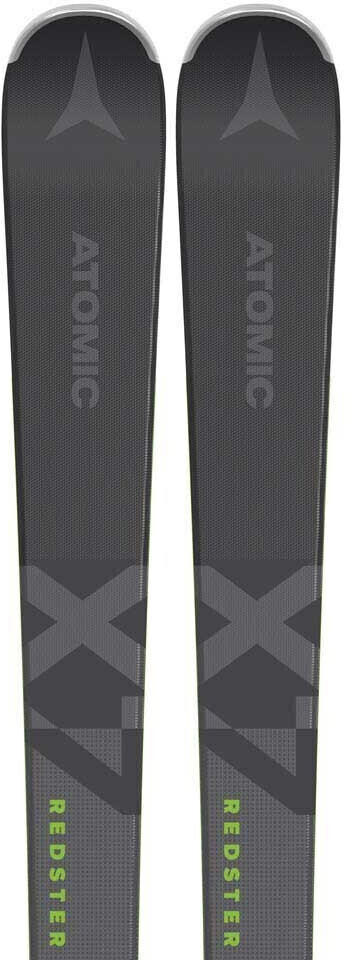
Backcountry performance
The first is the weight of the skis, as backcountry skiers often have to traverse uphill. In this category, the Salomon MTN Explore 95 stands out with its lightweight construction, thanks to a combination of carbon and flax fibers, making uphill ascent easier while still offering stability and performance on the downhill. Another aspect to consider is the width of the skis. For those who prefer variable snow conditions, the Black Diamond Helio 95 Carbon with its 95mm waist width is an excellent choice, providing a balance between float and maneuverability. Additionally, skis with progressive rocker profiles, like the Atomic Backland 95, offer improved floatation and maneuverability in softer snow conditions, enhancing backcountry performance.
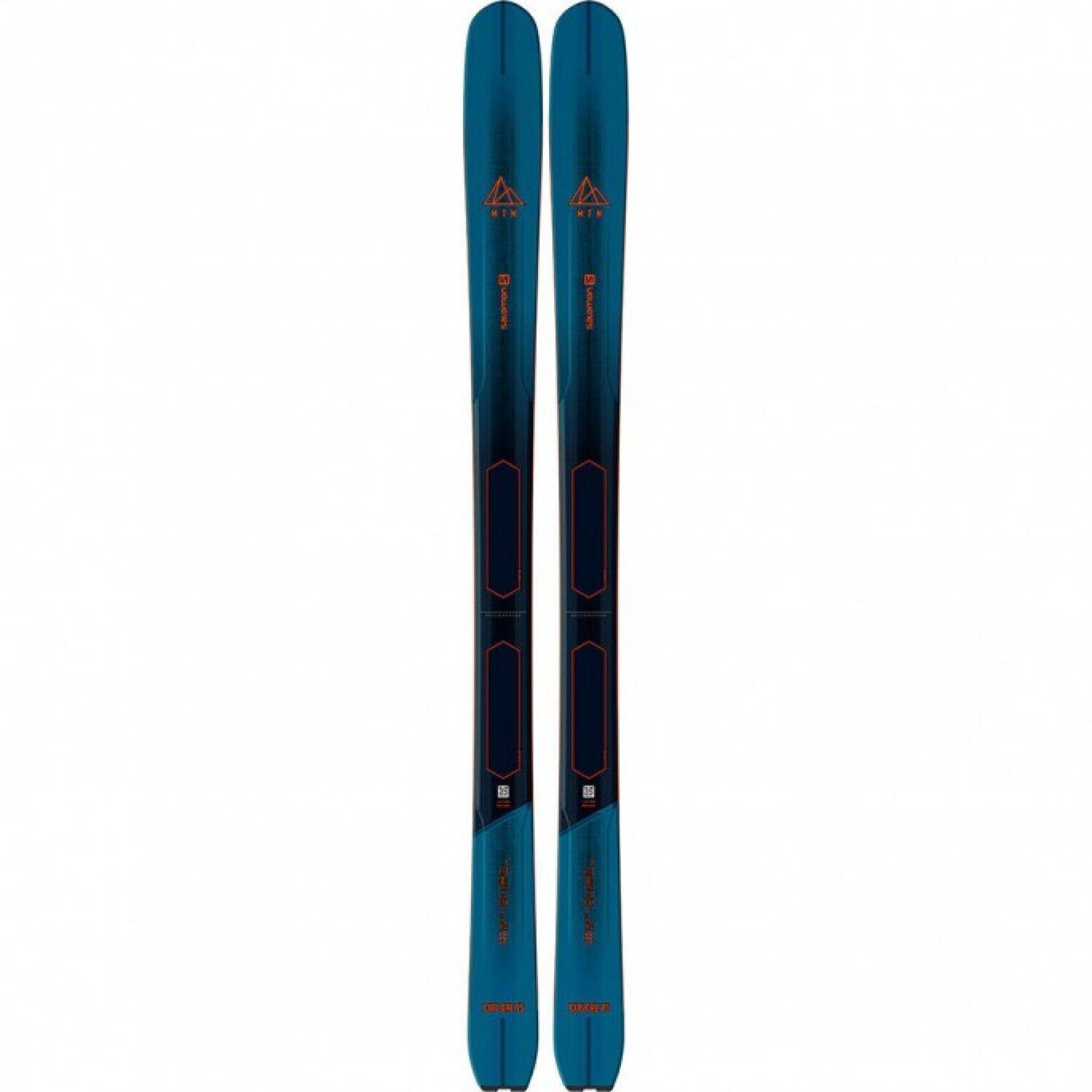


Beginner-friendly
Look for skis with a softer flex, as they offer more forgiveness and easier turn initiation. The Rossignol Experience 74 and the Atomic Vantage X 74 are excellent choices for beginner skiers. These skis are carved to a shorter length, enabling better control and maneuverability. Additionally, they feature an all-mountain rocker profile, which helps with turn initiation and provides stability on variable snow conditions. The lightweight construction of these skis allows beginners to control their movements with less effort, enhancing their overall skiing experience.
Intermediate-friendly
Skis that are designed for intermediate skiers typically offer a good balance between beginner-friendly features and more advanced performance capabilities. One example of an intermediate-friendly ski is the Rossignol Experience 76 CI. This ski features a lightweight construction and a versatile 76mm waist width, which provides stability and control on groomed slopes. Another great option is the Volkl Deacon 76 Pro, which offers advanced technology like a Titanal reinforcement for stability, while still being forgiving enough for intermediate skiers to enjoy. Both of these skis are suitable for intermediate skiers looking to improve their technique without compromising on performance.




Advanced-friendly
Are you an advanced skier who loves to carve up the slopes at high speeds? Then you'll want to find skis that are advanced-friendly. Look for skis that offer excellent stability and agility. One great choice for advanced skiers is the Atomic Redster S7. This ski features a woodcore construction that provides a lively rebound while maintaining stability at high speeds. It also has a narrow 70mm waist width, which allows for quick edge-to-edge transitions. Another option to consider is the Volkl RTM 84. This ski is designed for advanced skiers who want maximum performance and precision. It has a full sidewall construction and a wide 84mm waist width, making it stable and precise while carving turns. Overall, it's important to choose skis that can keep up with your aggressive skiing style and provide the necessary stability and control.



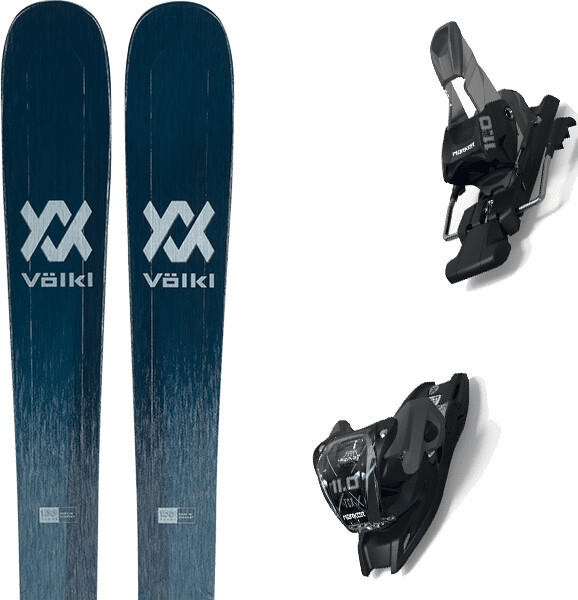
Skill progression
First and foremost, it's important to find skis that are suitable for your current skill level but also provide room for growth. The Volkl RTM 78 is an excellent option for beginners or those looking to improve their skills. These skis feature a lightweight construction and an easy-to-turn design, perfect for building confidence on the slopes. Another great option for skill progression is the Atomic Vantage 86 C, which is designed for intermediate skiers looking to advance their skills. With a versatile all-mountain profile and reliable edge grip, these skis offer the stability and control needed for skill development. For more advanced skiers, the Rossignol Experience 88 Ti is a top choice. These skis are built with a high-performance construction and advanced technologies like Carbon Alloy Matrix for enhanced power and precision, perfect for pushing your skills to the next level. Overall, it's important to choose skis that match your current skill level while leaving room for improvement as you progress.

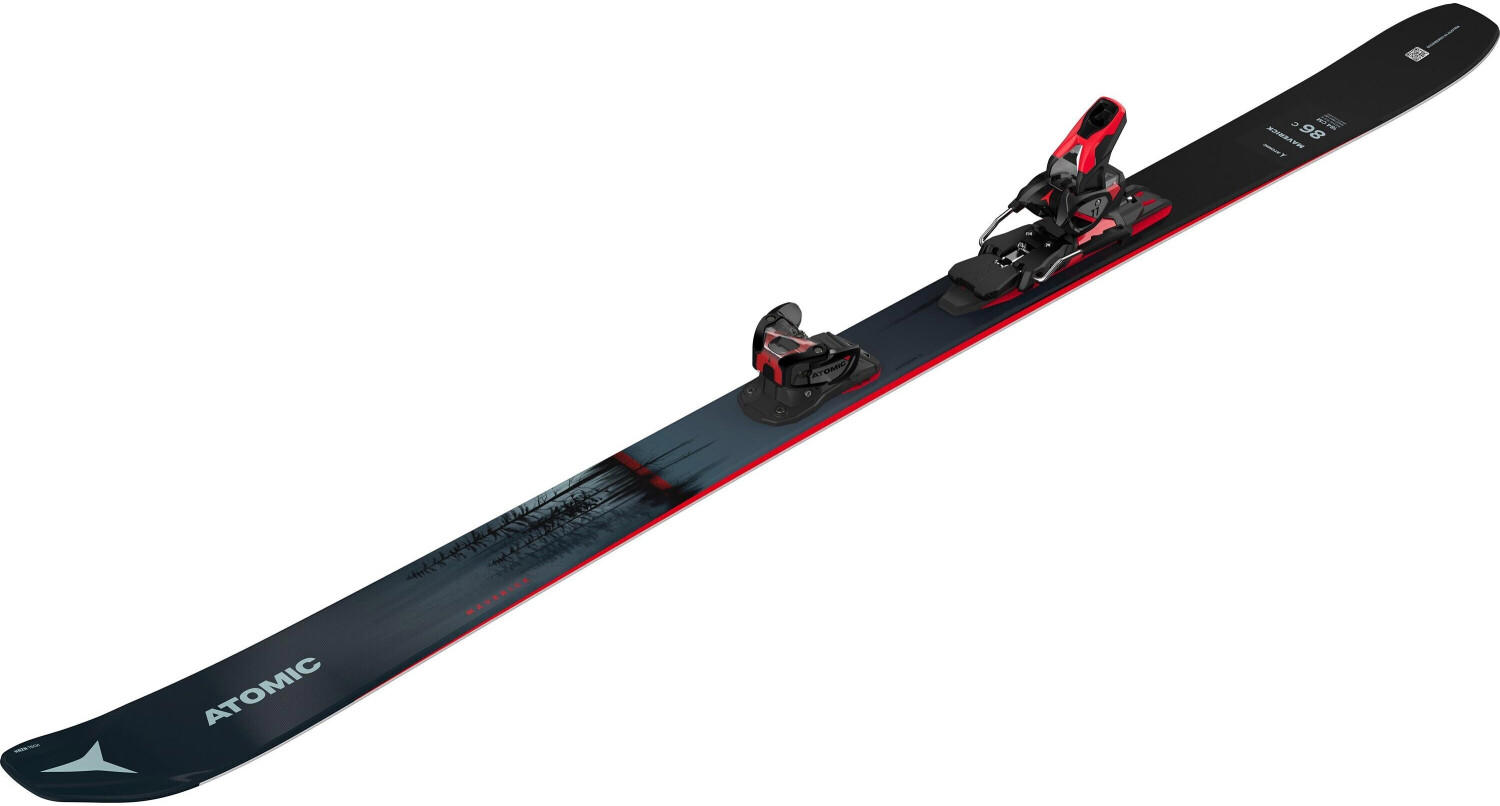


Durability
Some manufacturers have incorporated innovative technologies to enhance durability. Volkl Kendo 88 Skis stand out in this regard with their Multi-Layer Woodcore, which combines two types of wood for increased durability and strength. Another option is the Dynastar Menace 98 Skis, which feature a Sandwich Construction with a full-length wood core that offers excellent shock absorption and durability. Within the "all-mountain" segment, the Atomic Bent Chetler 100 Skis are known for their durability due to the HRZN Tech construction, which adds 10% more surface area in the tip and tail for better stability and overall durability in rough conditions.
For those interested in freestyle skiing, the Armada ARV 96 Skis utilize a durable ash and poplar core, reinforced with carbon fiber, making them exceptionally strong and capable of enduring demanding tricks and landings. Additionally, the Salomon QST 106 Skis are renowned for their rugged construction, including a full-length hybrid woodcore and a carbon and flax laminate, resulting in outstanding durability. Remember, choosing skis with durable materials can provide peace of mind and enhance the lifespan of your equipment.




Performance in different snow conditions
Skis specialized for specific conditions can greatly enhance your skiing experience. All-mountain skis, such as the 'Nordica Enforcer 100' and the 'Blizzard Bonafide', are versatile options suitable for a range of snow conditions. Their wide waist widths make them ideal for navigating variable terrain, while their rocker-camber profiles ensure excellent edge hold and stability.
For those who enjoy skiing on groomed snow, carving skis like the 'Volkl RTM 84' and the 'Atomic Vantage X 80 CTI' offer exceptional performance. These skis have narrower waists for enhanced maneuverability on firm snow and responsive turns. They often feature a cambered profile, providing maximum edge contact with the snow and optimal power transmission.
Additionally, there are powder skis designed specifically for deep snow conditions. Models like the 'Rossignol Soul 7 HD' and the 'Black Crows Atris' boast wider waists and generous floatation to effortlessly glide through powder. These skis often feature rockered profiles and unique constructions to enhance maneuverability and promote easy turn initiation in deep snow.
Ski boot compatibility
It is essential to ensure that your ski boots fit perfectly onto the skis, as this will greatly affect your performance and comfort on the slopes. Look for skis that have binding systems that are compatible with your boots, such as alpine ski boots or backcountry boots. Some popular products on the market that offer ski boot compatibility include the Salomon QST 99 skis with their EPS 4D Technology that ensures optimal integration with most ski boots. Another great option is the Volkl Blaze 106 skis which feature bindings that are compatible with alpine and alpine touring boots for maximum versatility.
If you are a backcountry ski enthusiast, narrower skis such as the Black Diamond Helio 88 Skis are designed to be paired with lightweight, tech-compatible ski boots. These skis offer enhanced performance in backcountry environments, perfect for those seeking adventurous off-piste experiences. Alternatively, for beginners or those looking for a more relaxed skiing style, wider skis like the Rossignol Experience 88 Ti Skis provide better stability and floatation, suitable for use with alpine ski boots. Remember, selecting skis that are compatible with your ski boots is paramount for a safe and enjoyable skiing experience.

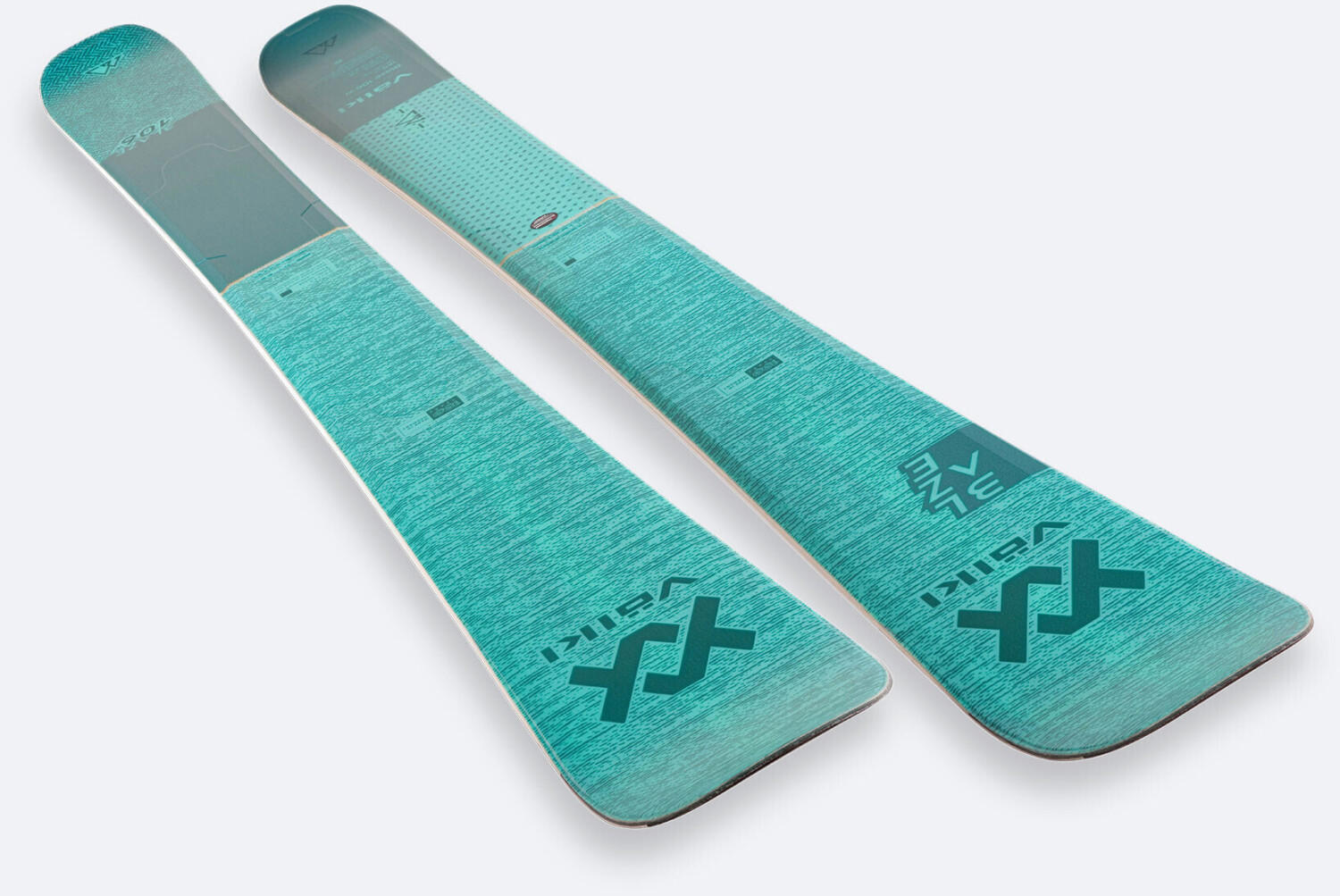

Price
It is crucial to find a balance between your budget and the quality of skis you desire. In the entry-level segment, one affordable option is the Salomon S/MAX 9 + Z12 GW Ski Set. This ski set is designed for intermediate skiers and offers excellent stability and control with its stiff construction. Another budget-friendly option for beginners would be the Rossignol Experience 76 CI Skis. These skis incorporate lightweight materials and are easy to maneuver, making them perfect for those just starting out on the slopes.
In the mid-range segment, the Nordica Enforcer 94 Skis offers a great value-for-money option. These skis are well-suited for intermediate to advanced skiers who want both on-piste and off-piste performance. With its all-mountain design, the Enforcer 94 provides stability and versatility in various snow conditions. For advanced skiers looking for high-performance skis, it is worth considering the Blizzard Bonafide Skis. These skis feature a versatile profile, combining a powerful wood core with carbon fiber technology for superior power and stability at higher speeds.



Please note that the prices and availability of these products may vary depending on your location and the time of purchase.
Variety of brands
Each brand offers its own unique features and specifications that appeal to different skiers. For example, Volkl is known for its high-quality skis that provide stability and control, making them a great choice for advanced skiers. On the other hand, brands like Rossignol and Salomon offer a wide range of options for both beginner and intermediate skiers, with models that focus on easy turn initiation and maneuverability. Moreover, some brands cater to specific skiing styles, such as Blizzard and their freeride skis designed for off-piste adventures.
It's important to note that while certain brands may excel in specific areas, skiers should also consider their own individual needs and preferences when choosing the right skis. Atomic, for instance, stands out for its innovative technologies that enhance performance, but the skis might be on the stiffer side, requiring stronger skiers to fully maximize their potential. Similarly, K2 skis are renowned for their forgiving nature, which makes them great for beginners or those looking for a more relaxed skiing experience. Ultimately, the choice of brands comes down to personal preference and finding the right balance between performance, comfort, and skill level.